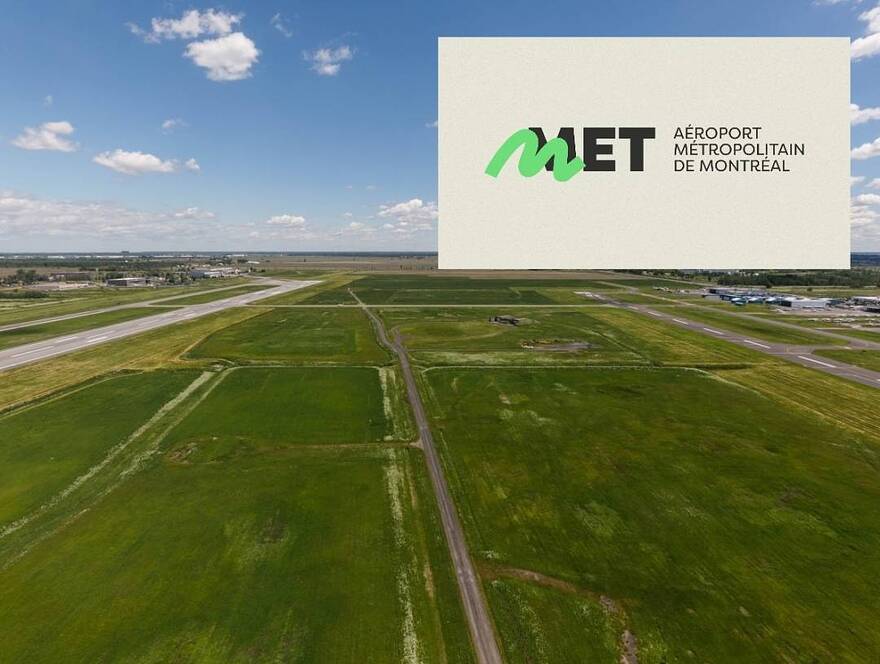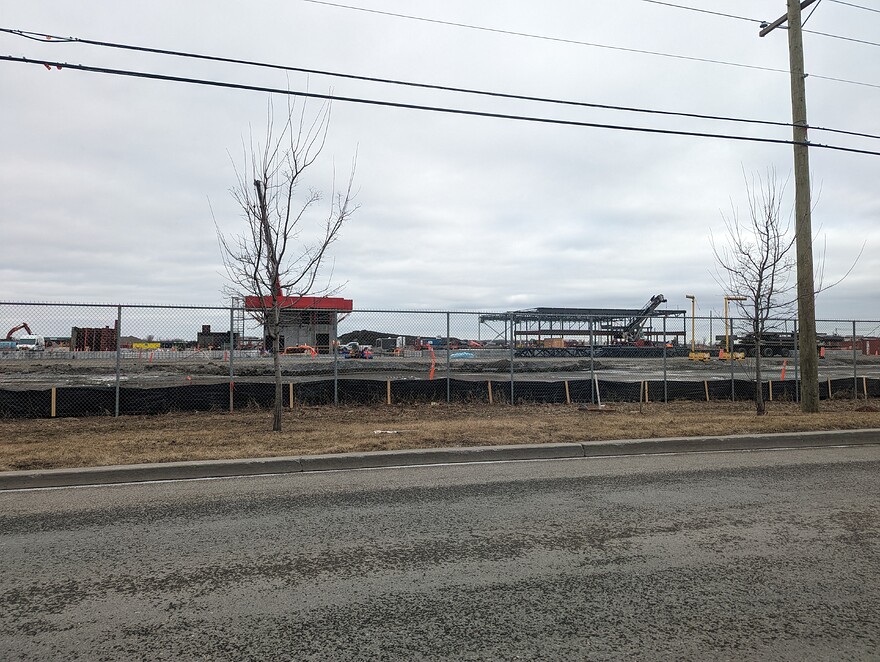"St-Hubert airport’s planned expansion is a step closer to reality after the Canada Infrastructure Bank approved a $90-million investment in a new passenger terminal.
The loan will allow Toronto-based Porter Aviation Holdings Inc. and Australia’s Macquarie Asset Management to jointly build the terminal, CIB said Tuesday. Exact terms aren’t being disclosed, though the financing is of a long-term nature, the federal Crown corporation said.
Airport authorities said last week that the airfield had been renamed Montreal Metropolitan Airport as part of its makeover. St-Hubert’s main runway can accommodate most commercial aircraft operating in Canada.
Scheduled to open in the summer of 2025, the new terminal — estimated to cost at least $200 million — will eventually be able to handle up to four million passengers a year. Porter plans to serve all major Canadian cities from the South Shore with a combination of Embraer E195-E2 jets and Dash 8-400 turboprops, while providing connecting flights for passengers served by Pascan regional airlines.
“Infrastructure assets often live generations,” CIB chief executive Ehren Cory said in an interview ahead of Tuesday’s announcement. “A big part of the challenge is that you have to make these massive capital investments upfront, and then they have very long life and long payback periods. Our loans are often 10 to 25 years long, though I won’t speak specifically to the life of this one.”
Discussions about the investment with Porter and Macquarie began last year, Cory said.
“Infrastructure projects, given their scale and their complexity, usually require a long lead,” Cory said. “Six to 18 months of conversations are very typical for us.”
A major Canadian bank, which remains unnamed for now, is also providing debt financing for the construction, Porter CEO Michael Deluce said in a separate interview.
Key features of St-Hubert’s revamp include the creation of a 21,300-square-metre, two-storey domestic terminal with nine gates and associated taxiways, as well as parking lots, electric vehicle charging stations and shuttle bus pickup and dropoff points.
Preparatory work on the site began in August. A hotel is set to be built near the airport, though it won’t be covered by the CIB loan.
Porter has identified “in excess of 10 domestic markets” that it will look to operate from St-Hubert once the terminal is open, Deluce said. He cited Vancouver, Calgary, Edmonton, Winnipeg, Halifax and St. John’s, N.L., as possibilities.
What’s more, airport authorities are already in “active discussions” to lure other carriers, Deluce added.
The expansion project has drawn flak from environmental groups and local residents. After engineering firm Stantec concluded in an acoustic impact study in November that the impact of increased commercial activities at the airport would be “minimal,” a group called the Coalition Halte-Air Saint-Hubert panned the 21-page report, saying it deliberately underestimated current noise pollution.
“As far as we’re concerned, this is a project that should not go ahead for several reasons, whether it’s noise, traffic or atmospheric pollution,” Jacques Benoit, a South Shore resident who is part of the citizen coalition, said in an interview. “The promoters have made very little information available to the public, and no economic impact study has been filed to justify the expansion. There’s no proof that this is a necessary project. The social acceptability is not there.”
Several members of the group have written to Quebec government ministers to complain about the project and request more details, Benoit said. A public information session in St-Bruno, organized by the coalition, drew more than 100 people last week, and Benoit says other meetings will be held in the coming months.
“We’re working on several fronts,” he said. “We’re not going to give up.”
Deluce dismisses the criticism, citing “broad community support” for the project. Since St-Hubert is mostly used by general aviation and flight training schools, commercial jets could in fact reduce the airport’s “noise footprint,” he said.
“The amount of air traffic that would be added to the airport is relatively small compared with existing movements,” he said in the interview. “Arguably, over time, aircraft movements will go down with the introduction of commercial services, which are quieter aircraft that climb relatively quickly out of the area. Training flights typically involve noisy aircraft that fly low and fly circuits.”
The loan announced Tuesday is the CIB’s third investment in airport infrastructure since its creation in 2017. The bank is already providing $300 million in financing for the future Réseau express métropolitain station that will be built at Trudeau International Airport. The station is due to open in 2027.
CIB is also one of the key backers of the REM itself, having invested about $1.3 billion in the light-rail project. CDPQ Infra, the infrastructure arm of the Caisse de dépôt et placement du Québec, is the project’s promoter."



